When it comes to uncovering English heritage, few experiences compare to exploring one of the country’s many castles. Whether it’s an ancient clifftop fortress or a royal residence dripping in gold leaf, English castles provide a window into the past.
Take a tour of England to explore historic icons like Windsor Castle, Chatsworth House and the Tower of London. Learn about the fascinating characters that lived in them and how life has changed over the centuries.
In some, you’ll find yourself marvelling at sparkling chandeliers and royal jewels. Meanwhile, in others, you’ll be in awe of how people built such formidable structures in the 11th century.
With over 800 castles dotted across the country, you might be wondering where to begin. That’s why we rounded up 9 of the best castles in England for you to explore. Read on to discover some of the country’s most famous strongholds, palaces and stately homes.
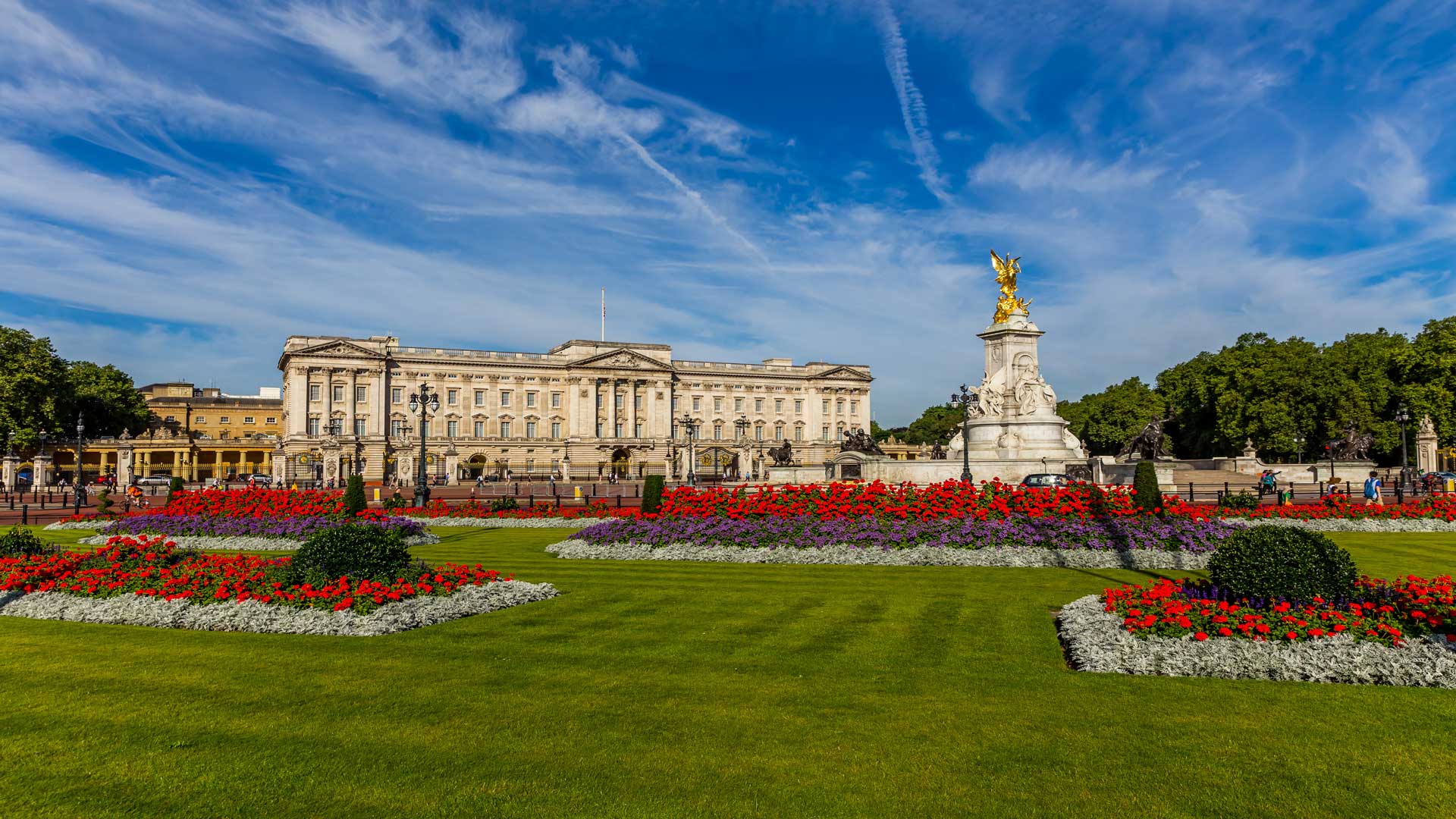
1. Windsor Castle
As Europe’s oldest and largest inhabited castle, Windsor Castle is a masterpiece of English history. It was originally constructed in the 11th century and has been a royal residence for over 1,000 years. Throughout that time, it has been an important site for the British monarchy.
Windsor Castle was built during the reign of William the Conqueror as a motte-and-bailey structure. In the 16th century, King Henry VIII spent much of his life here and enjoyed hunting in the sprawling grounds. Today, you can see his grave in St George’s Chapel within the castle complex.
In the 20th and 21st centuries, Queen Elizabeth II also spent a lot of time at Windsor Castle and hosted numerous state events there. The current British monarch – King Charles III – does the same. The castle’s continued use by the monarchy even today highlights its enduring significance.
Get a glimpse into royal life as you admire the grand stone walls and ornate state apartments. Don’t miss a walk through Windsor Great Park to marvel at the magnificent towers from afar.
- Explore historic castles on a British self-drive tour
- Related: Top things to see and do in the UK
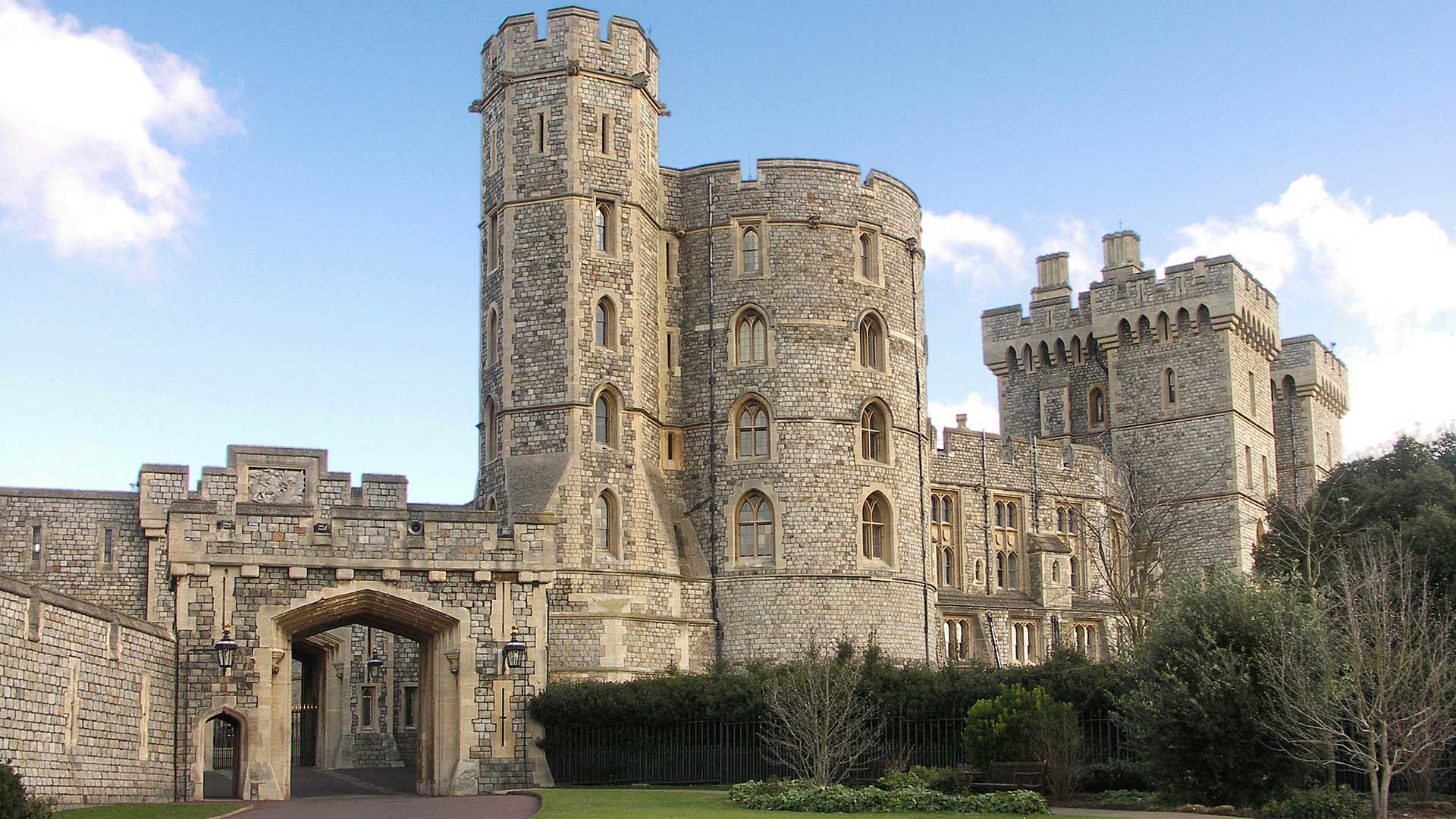
2. Alnwick Castle
Alnwick Castle is a striking 11th-century medieval fortress in Northumberland. It’s probably best known today for its appearance as Hogwarts in the Harry Potter films.
Alnwick Castle is England’s second-biggest inhabited castle after Windsor Castle. It’s the home of the Duke of Northumberland and his family. They only live in part of the castle, so the rest is open to the public.
Visit this castle for imposing towers and beautifully preserved medieval interiors. Explore the picturesque gardens or try your hand at archery in the castle’s grounds. Broomsticks are also available if you want to pose for Harry Potter-themed photos!
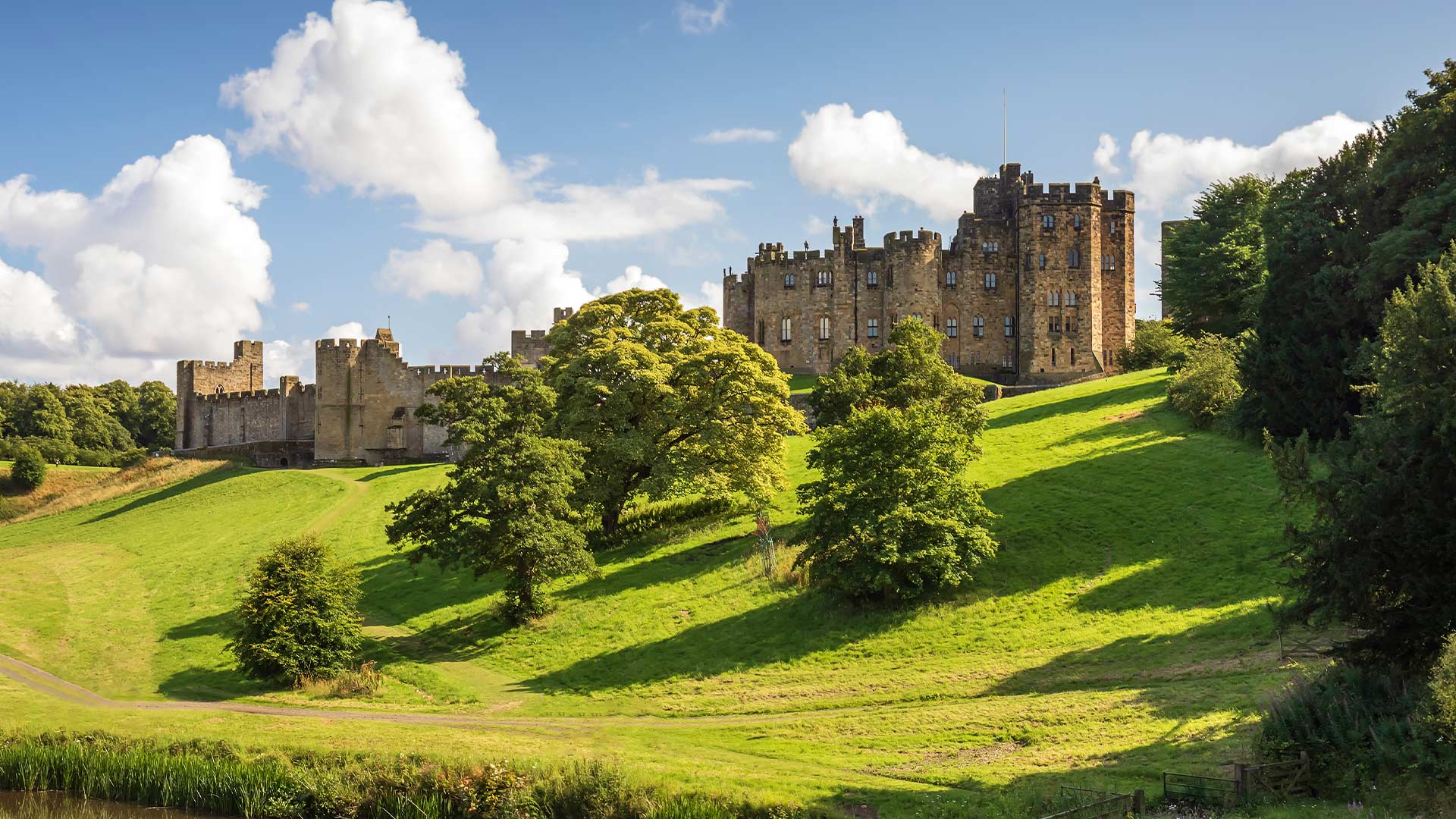
3. York Castle and Clifford’s Tower
Before the Norman Conquest, York was a Viking settlement known as Jórvík. Once William the Conqueror was king, he had York Castle built to suppress a local rebellion.
In the 13th century, King Henry III expanded the structure by adding Clifford’s Tower, the castle’s keep. Today, the tower is an English Heritage site. It sits atop a mound from where you’ll get an incredible view of York.
Much of the castle became run down in the 15th and 16th centuries but was refortified during the 17th-century English Civil War. Parts of the castle were later used as a prison and have since been turned into York Castle Museum.
The museum houses exhibitions on York’s turbulent history, focusing on the last 400 years. Why not spend some time exploring its recreated Victorian street and spooky prison cells?
- Discover York and other English highlights with a guide on a small group tour of the UK
- Related: Best UK road trips: A local expert's view
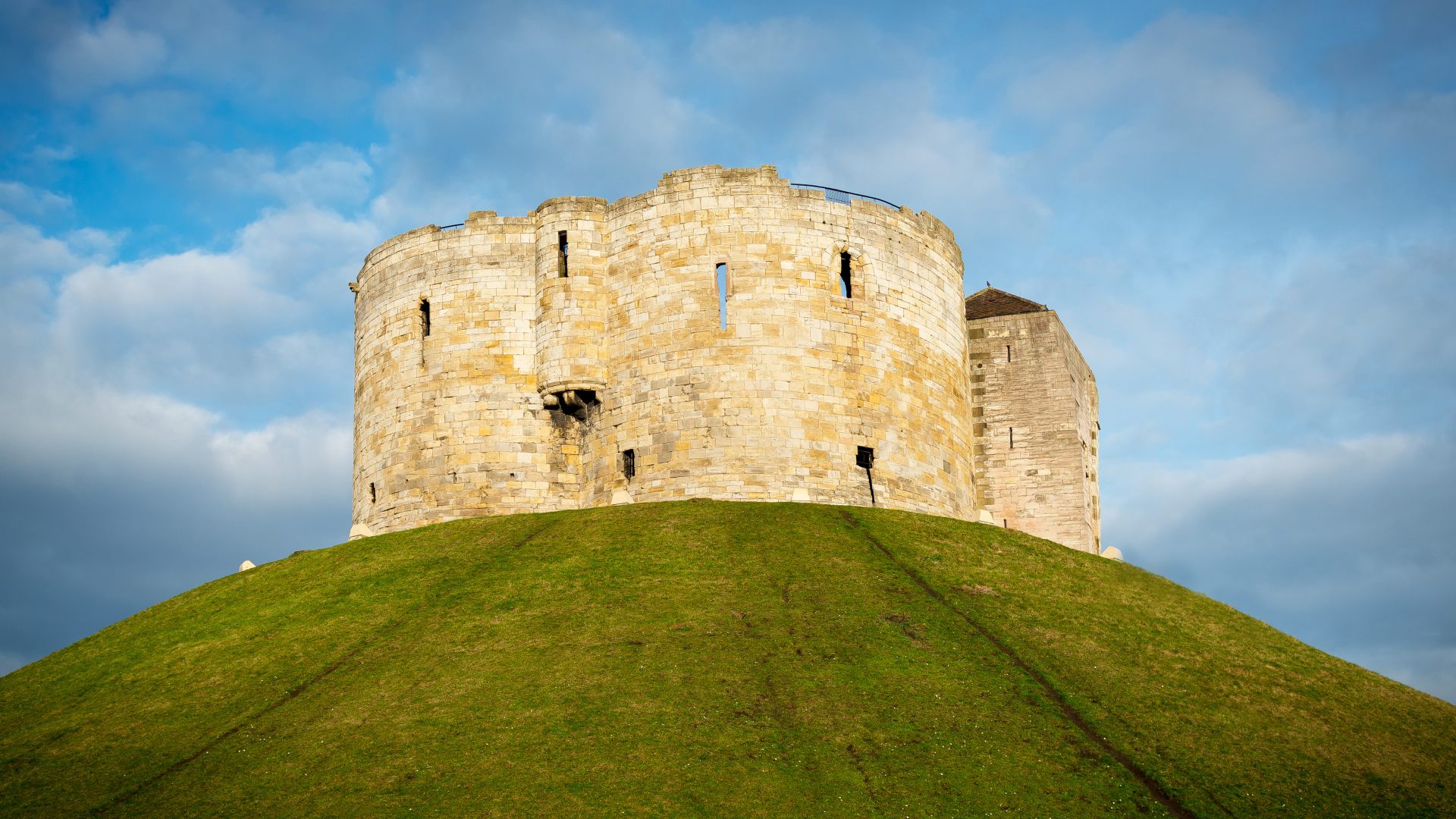
4. Ludlow Castle
Ludlow Castle in Shropshire is a classic example of a medieval fortress. It stands proudly on the western edge of Ludlow, near the English border with Wales.
This Norman-era castle is technically a ruin, but its impressive walls are still standing, and you can explore the grounds via scenic walkways and footpaths. You might also enjoy climbing its lofty towers to take in sweeping views of the Shropshire countryside below.
The castle was one of England’s first fortresses made of stone. It was fortified with a Great Tower in the 12th century. Several important historical figures have stayed here, including Catherine of Aragon, Henry VIII’s first wife.
The castle is now open to the public. You can walk through the castle grounds and see the remnants of grand staterooms – it’s a fantastic place to get an insight into medieval and Tudor lives. The castle also hosts local events, including concerts and stalls from the town’s annual food festival.
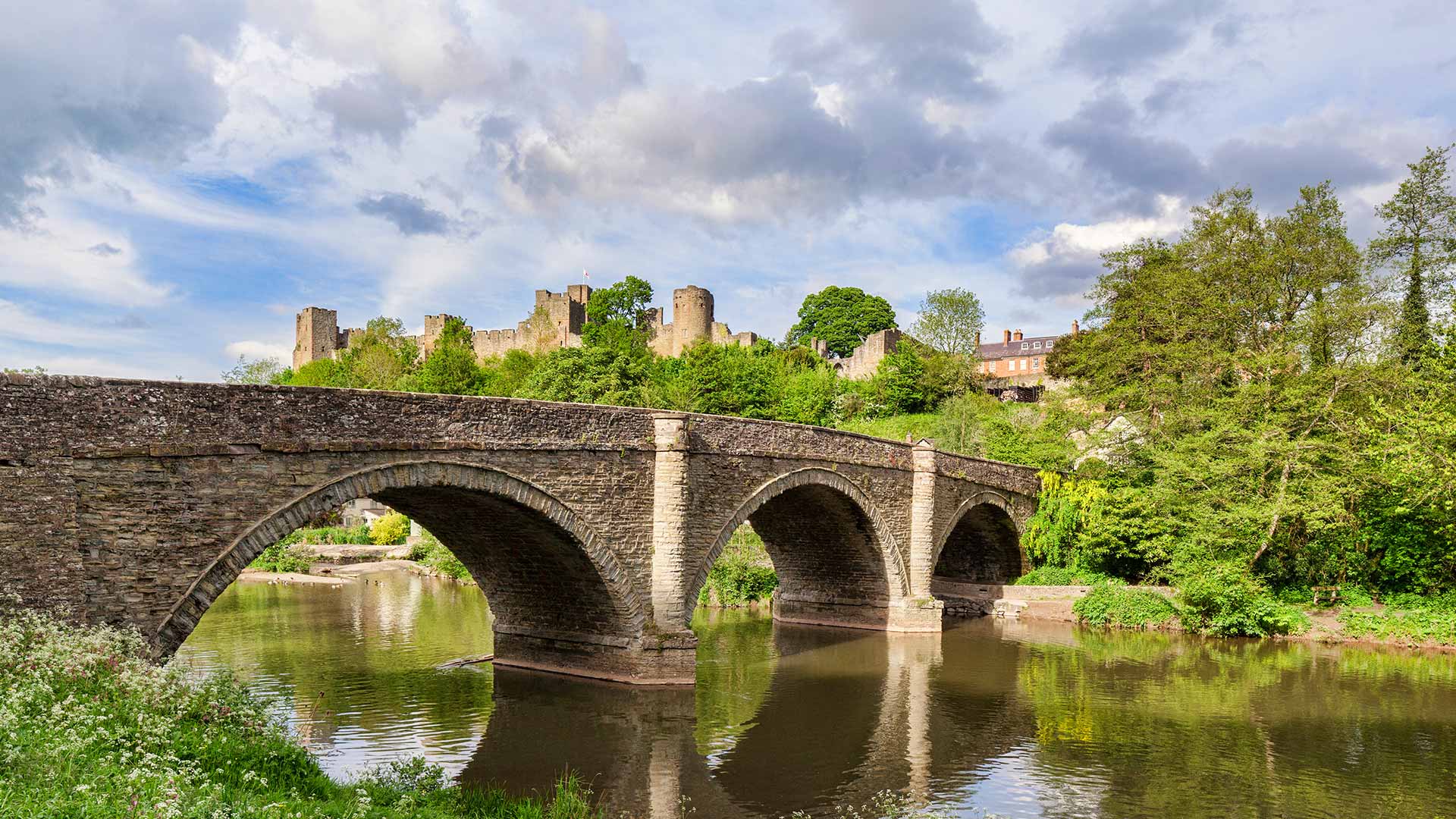
5. Tower of London
The Tower of London is one of England’s most iconic landmarks. William the Conqueror ordered the tower’s construction in the 11th century, and it was expanded to include Tower Wharf during the 14th century. Over the years, the castle has served as a royal palace, prison, and treasury.
Today, the castle is a UNESCO World Heritage Site. You can explore the medieval palace rooms, admire the Crown Jewels and even climb the White Tower to see where prisoners and traitors were imprisoned.
You might also see the Beefeaters, royal bodyguards who look after the tower and jewels. These guards perform daily ceremonies, including the Ceremony of the Keys, which has taken place every day at 9:52 PM for hundreds of years.
You can buy tickets to see this historic ceremony in person. It tends to sell out early, so make sure you book ahead!
- Related: Best places to visit in the UK

6. Bamburgh Castle
A visit to Bamburgh Castle is one of the best things to do in Northern England. Situated on the rugged shore of Northumberland, this stunning coastal fort dates back to the 6th century.
The site first appeared as a Celtic stronghold but was captured by the Anglo-Saxons in the late 500s. It was a pretty tumultuous 500 years, with many battles and attacks. After their conquest of Britain, the Normans rebuilt and enlarged the castle. From then, it was used mostly as a royal residence.
Various people have owned the castle during the 18th and 19th centuries. That said, William Armstrong, an industrialist engineer, bought and completely renovated it in the late 1800s. His family owns and lives in the castle even today. But don’t worry, visitors can still come and look around.
Take a trip to Bamburgh Castle to see the grand staterooms and the keep. You can snap photos of the sweeping sea views as you wander the extensive grounds. There are also fascinating exhibitions on archaeology and aviation.
- Enjoy a tour of Ireland’s castles and learn about Irish folklore and history
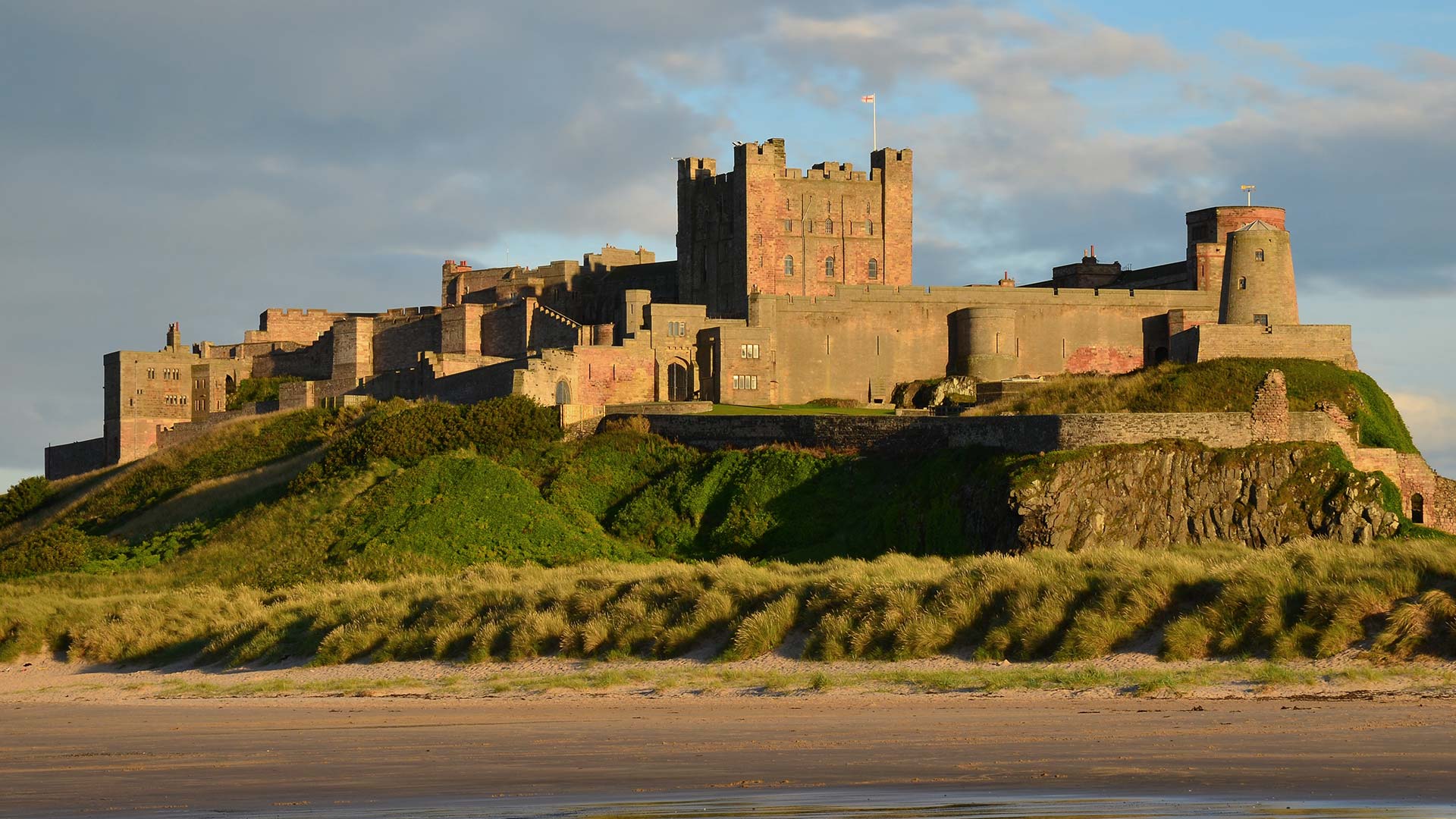
7. Buckingham Palace
Though not technically a castle, Buckingham Palace is one of the most famous royal residences in the world. It has long played an essential role in the history of the British monarchy.
The palace sits in the heart of London and has been the official home of British monarchs since the 19th century. With its neoclassical architecture and gold-tipped gates, the building is instantly recognisable. Snap some photos and imagine the glamorous lives of the royals living inside.
Buckingham Palace is an active royal seat, so much of it is closed to the public. But you can visit the staterooms at certain times of the year with an advance ticket. There’s also an art museum, the King’s Gallery, which holds regular exhibitions.
If you can’t get a ticket, stroll through St James’ Park free of charge and admire the palace from outside the gates.
- Related: Cool facts about England

8. Chatsworth House
Chatsworth House in Derbyshire is an enormous stately home, so it’s not strictly a castle. You can visit while you’re in the Peak District to get some insight into the lifestyles of English aristocrats.
The estate dates back to the 11th century, but the country house you’ll see today was built in the 1700s. It’s the official seat of the Duke of Devonshire, and the Cavendish family, who hold this dukedom, still live here.
You might recognise the building and its interiors from the 2005 film of Jane Austen’s Pride and Prejudice. Even if you’re not an Austen fan, you’ll still enjoy its beautiful gardens, stunning architecture and extensive art collection.
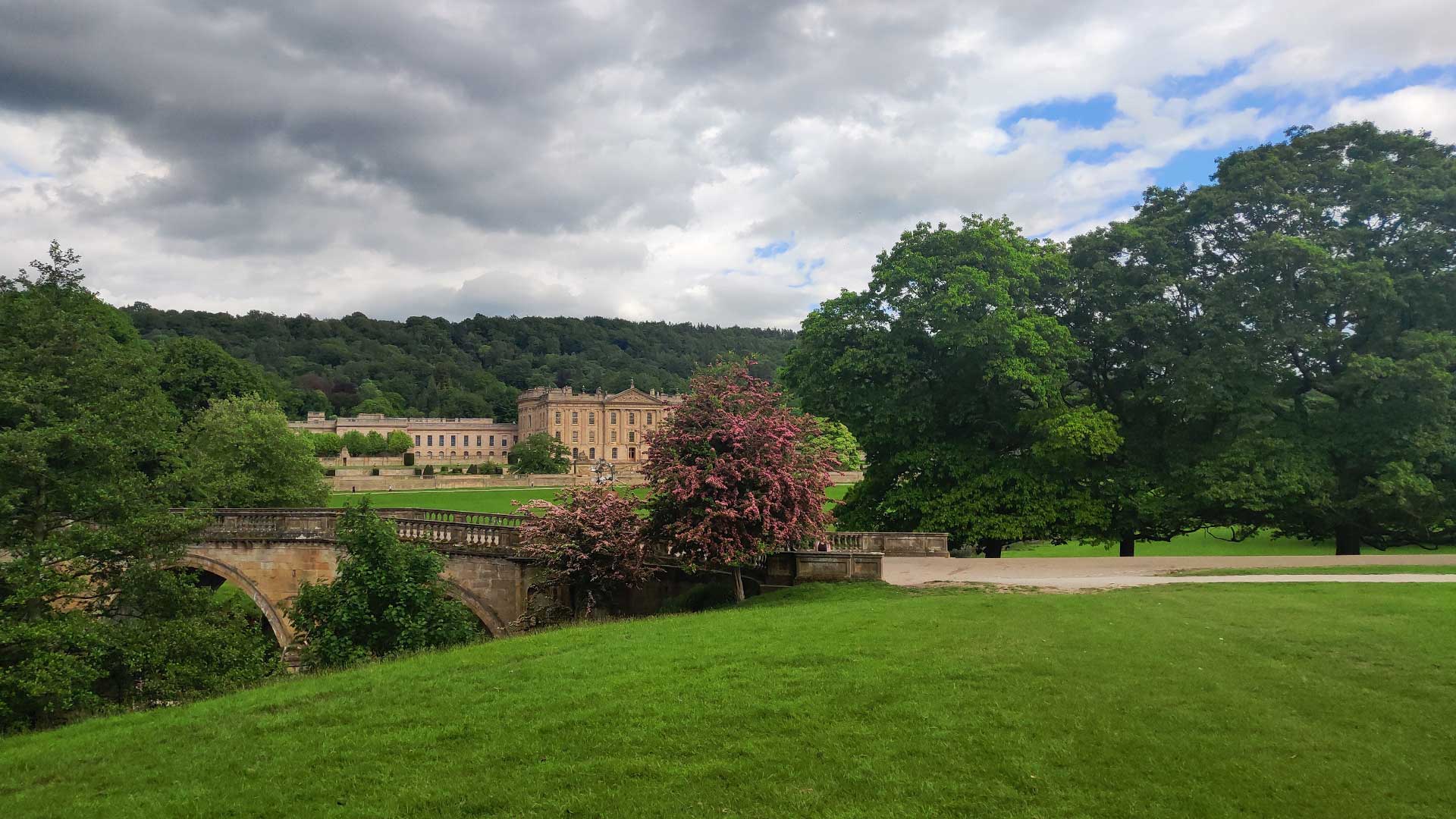
9. Castle Howard
Despite its name, Castle Howard isn’t actually a castle but a country house in North Yorkshire. It was built in the 18th century and is an excellent example of Baroque architecture in England.
You might recognise the property from its appearances in various TV series and films. Most famously, it stood in for Brideshead Castle in Brideshead Revisited in both the 1981 TV show and the 2008 film. It also acted as the Duke of Hasting’s home in the first season of Bridgerton.
The Howard family that gave the site its name still lives here, but the house is open to the public between April and October. Meanwhile, you can explore the gorgeous 1,000-acre gardens year-round.
- Related: Where is Bridgerton filmed?
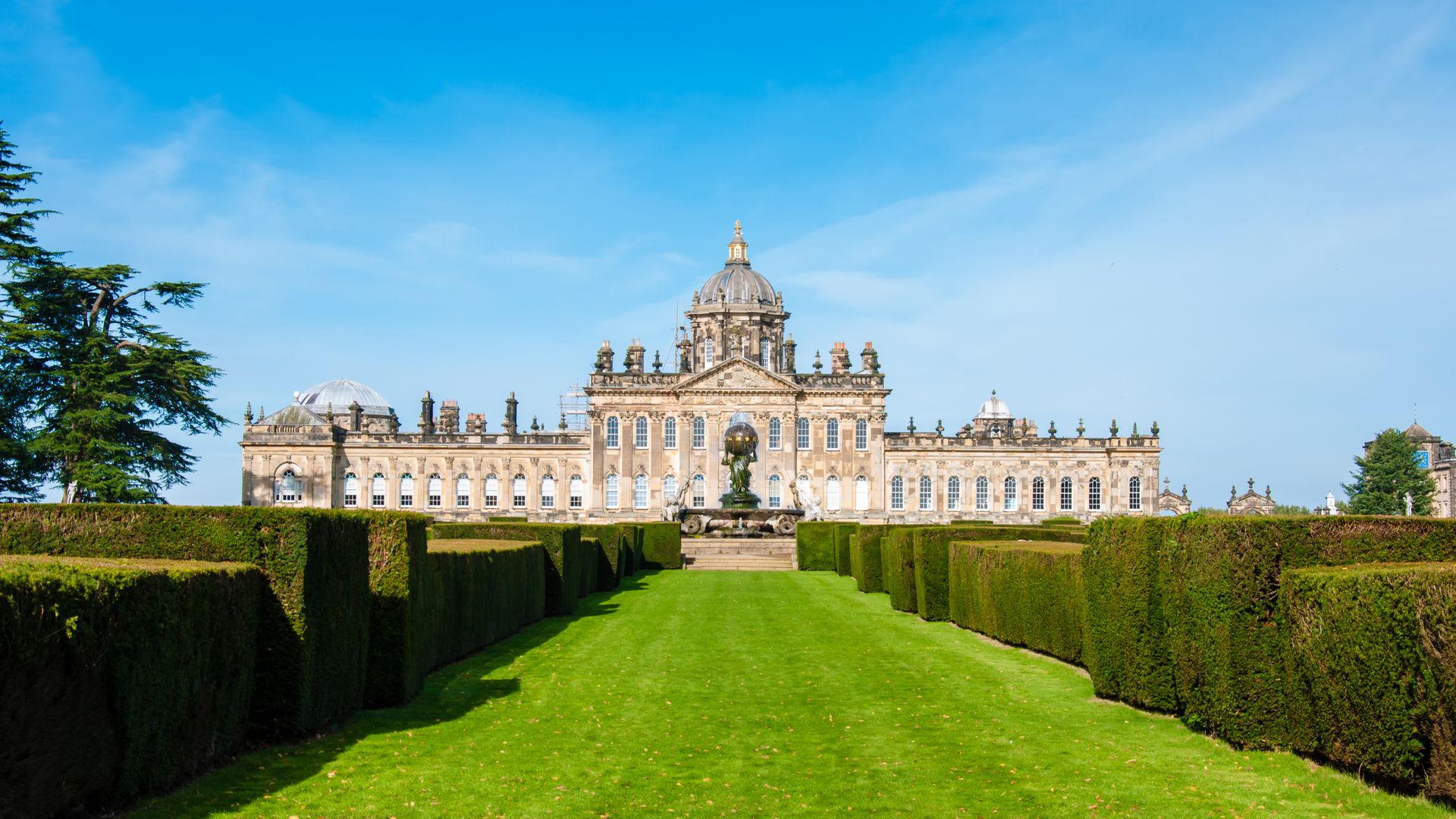
A brief history of England’s castles
Roman forts first appeared in Britain as early as the 1st century AD. Over time, many of these grew and were expanded into castles.
For instance, the Normans built several castles in the Middle Ages to protect strategic locations during their conquest. As you may know, William the Conqueror and his army invaded England in 1066 and famously defeated the Anglo-Saxons at the Battle of Hastings.
When William was king, England saw numerous uprisings and rebellions. He ordered castles to be constructed around the country to help strengthen his position.
These Norman castles were often simple motte-and-bailey fortifications. A fort was made from wooden or stone walls on a “motte” (mound), with a “bailey” (walled courtyard) for extra protection. Later, these castles were enhanced with defensive features like moats and towers.
Some castles resisted centuries of conflict and changes to the English cultural landscape. While some sites have been repurposed or destroyed, you’ll find that many others have been meticulously preserved.
Whether nestled within town walls or tucked away in remote countryside locations, these structures tell the country’s story. Visit England’s castles to step back in time and uncover the past.
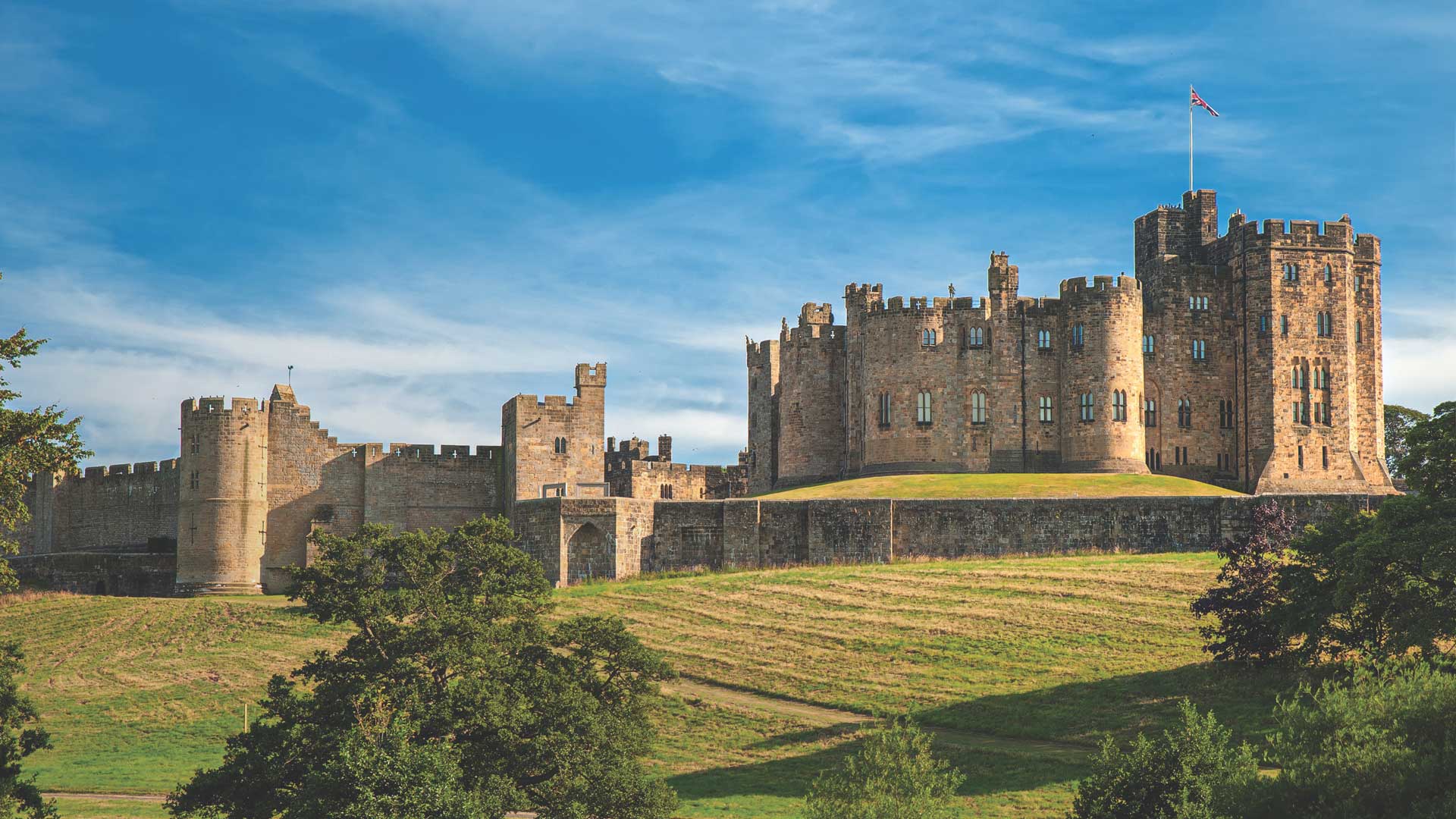
How many castles are there in England?
Putting an exact number on how many castles England has is tricky. Estimates range from 800 to several thousand, depending on who you ask.
One of the reasons that the number varies so much is that historians don’t always agree on the definition of a castle. For instance, some say only defensive structures are castles, while others include country houses and palaces.
You’ll also find hundreds of castles elsewhere in the UK. Altogether, England, Scotland, Wales and Northern Ireland are thought to have at least 4,000 castles. Meanwhile, the neighbouring Emerald Isle has even more, with approximately 30,000 castles in Ireland.
- Discover castles and more on a tour of Scotland and England
- Related: Best castles to visit in Scotland and Ireland

Visit top English castles with Nordic Visitor
With their rich histories, spectacular locations and unique stories, England’s castles and palaces captivate visitors from around the world.
Let our regional travel consultants plan your dream trip to England. We’ll arrange your accommodation, local transport and optional activities, leaving you free to immerse yourself in England’s heritage.
Book a self-drive tour of the UK to travel at your own pace and see the attractions you’re most interested in. Or enjoy a guided small group tour so you can explore with a knowledgeable local guide.
Get in touch with our travel experts to plan the perfect English getaway.
